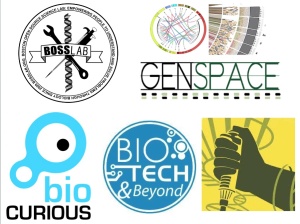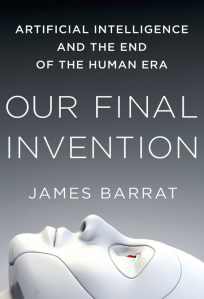Our Biohacker Future
As Casey Research commentator Doug Hornig put it in Biohackers, Our Next Computer Revolution or Global Catastrophe in the Making?: "Genspace is the democratization of science in a nutshell, a nonprofit funded by membership dues, tuition fees, and donations from supportive nonmembers. You can attach yourself to one of the scientists already embarked on a project, or you can set up one of your own. The only credential you need to bring is your enthusiasm for the subject, with Ph.D.s onsite to help you through the rough spots."
The idea is spreading across the globe. In the U.S. alone, there are now about a dozen community biolabs, or "hackerspaces," as they're known. Along with Genspace, they include Boston's Open Source Science Lab, BOSSLAB, BioCurious in the San Francisco Bay Area, and Los Angeles as well as Bio, Tech and Beyond, which just opened near me at Carlsbad California. More information on local groups and standards for laboratory safety can be found at DIYbio.org.
Hornig again: "Everyone admits that there are risks involved in fooling around with synthetic life forms. But the biggest one is the threat of bioterrorism, and that's probably not going to come from the public DIY Bio community. The horrible killer virus that unleashes World War Z is far more likely to emerge from a secret lab of some dedicated terrorist group. And you can be sure that the international intelligence agencies are on high alert for signs of any such development."
As for regulation, the U.S. government so far hasn't taken any steps to control at-home biology.
Or will we hack in code? Arduino's Raspberry Pi "computer on a board" has dazzled members of the Do It Yourself movement. Now Intel has leaped in with an improved version. It will give away 50,000 of them to universities soon.
There are already hundreds of active Hackerspaces around the globe.
Then there are the replicators. Little mobile M-blocks created by researchers at MIT can seek each other out and self-assemble into larger robots. This article cites Terminator but I recall Stargate. Let's do it smart, eh?
Or will nature hack us first? Ask the hornets. Some giant varieties are spreading due to warmer weather and people are dying, especially now that Asian Hornets have spread to Europe and Korea. Reminiscent of a novel I just read (and blurbed) -- Invasive Species by Joseph Wallace.
Not if we get real smart, real fast! Do it by emulating Einstein's brain! Here's an interesting article about how it differed.
Clues for our next hacks
Naked mole rats have what any animal would want. They live long lives—about 30 years—and stay healthy until the very end. Now biologists at the University of Rochester have new insights into the animal's longevity — better-constructed proteins.
Bad news for Singularity Zealots! Our brains may be much more complex than simply the sum of a trillion synapses . Although the human brain contains roughly 100 billion neurons, it contains billions more non-electrical brain cells called glia. I have long held that this network of cells does a lot more than just support and feed neurons. Indeed, I've suggested -- way back in EARTH (1989) -- that the glia and astrocytes might be true computational centers and the neurons serve as flashy communications hubs between them. All major glial cell types in the brain — oligodendrocytes, microglia and astrocytes — communicate with each other and with neurons by using chemical neurotransmitters and gap junctions, channels that permit the direct transfer between cells of ions and small molecules. Research is revealing that glia can sense neuronal activity and control it. Now this "second brain" is getting a fresh look.
Ray Kurzweil may not agree that glia and internal neuron structures do computing. But he does offer an interesting discussion of the tradeoffs in developing artificial intelligence (AI) taken from James Barrat's new book Our Final Invention: Artificial Intelligence and the End of the Human Era. Dolorous musings abound. For example, as George Dyson wrote, “In the game of life and evolution there are three players at the table: human beings, nature, and machines. I am firmly on the side of nature. But nature, I suspect, is on the side of the machines.” Indeed, Ray asks: "How can we get an AI to learn what our idealized values are?" I see no sign - alas - that Barrat and Kurzweil and Dyson have thought this through ... as American women are dying younger than the previous generation.
I've just written a creepy story about this: Tissue Engineering: How to Build a Heart. With thousands of people in need of heart transplants, researchers are trying to grow new organs. The "scaffolding" approach is gaining steam. Watch next year for my novelette that takes it to… extremes!


